Ask Question
Do You Need Any
Help?
- Call Us Now:
+248 4670300
- Talk To Us:
info@sfa.sc
Lobster Fishery
The spiny lobster fishery has traditionally been managed as a seasonal closure and limited access (license-limited) fishery. This is because fishers primarily exploit the shallow water and coastal stocks, where abundance is limited, thus causing rapid localised depletion with high fishing pressure. There have been several significant declines in these coastal stocks when too many licenses were allocated or when the fishery has remained open for more than three or four consecutive seasons.
Four main species of lobster are found in the Seychelles waters.
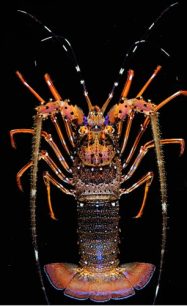
CN: Long-legged spiny lobster
LN: Oumar rouz
FAO Code: LOJ
SFA Code: HR
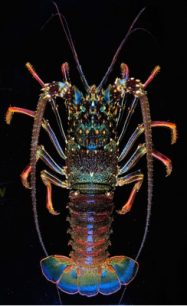
CN: Pronghorn spiny lobster
LN: Oumar gro latet
FAO Code: NUP
SFA Code: GT
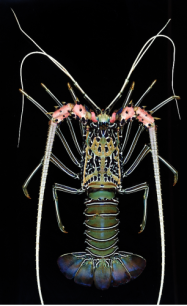
CN: Painted spiny lobster
LN: Oumar ver
FAO Code: NUV
SFA Code: HV
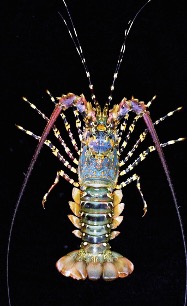
CN: Ornate spiny lobster
LN: Oumar blan, Porcelain or Ladwaz
FAO Code: NUR
SFA Code: P
How is the lobster stock monitored and assessed?
Stock status is determined through the assessments of several stock indicators, such as the index of abundance determined through Catch Per Unit of Effort (CPUE) during periods when the fishery is open and during the PLMP (Participatory Lobster Monitoring Programme) Fishery-Independent conducted annually.
Catch per Unit Effort involves the number of individual lobsters caught per man per hour or the number of kilograms caught per man per hour. As a condition of their license, the license holder must provide SFA with a mandatory logbook and all their sales records.
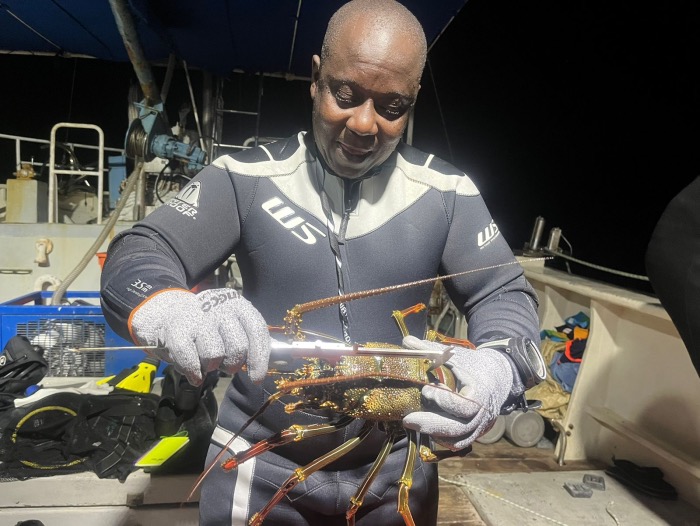
Due to the cost of conducting a large-scale survey, SFA has set up a Participatory Lobster Monitoring Programme (PLMP), which has been undertaken annually since 2005 (in October) at 20 indicator sites around Mahe, the inner granitic Island, to assess the lobster stock status for determining fishery opening or closure. Known lobster fishers work alongside SFA’s fisheries technicians and scientists to undertake this fishery-independent survey and determine stock status.
Based on the results of the analysis of the Catch per Unit Effort and Fishery-Independent surveys or a combination of both, the fishery may be opened or closed. For example, following a significant decline in stock indicators, the lobster fishing season remained closed for two consecutive seasons (2017-2018 and 2018- 2019) to allow the stock to recover.
Additionally, the Seychelles Fishing Authority undertook a large-scale fishery-independent survey in 2023. Almost three decades since the last comprehensive study, the Seychelles Fishing Authority has acknowledged the need to repeat such a survey. This survey assesses the abundance and distribution of spiny lobsters throughout the granitic and coralline islands of the Mahé Plateau. Depending on the reliability of fisheries-dependent or independent assessments, a comprehensive fisheries-independent survey will be conducted every five years to obtain an updated status of the lobster resource on the Plateau. (Can use same pictures as the PLMP)
How is the lobster stock monitored and assessed?
Upon opening the lobster fishery season, the Seychelles Fishing Authority issues a limited number of licences. Currently, there are sixteen (16) licenses which are issued (ten (10) licenses allocated for Mahe residents, four (4) for Praslin and two (2) for La Digue). The licences have underlying conditions that the angler’s fishers must abide by. These include a limit on the number of divers (four divers per license holder) and a prohibition on operating in marine protected areas (MPAs). For licensees using traps, a maximum of 6 traps are permitted. Additionally, license holders are not allowed to retain lobsters less than 7.5cm carapace length or in the berried state (female with eggs). Licensed fishers must also provide the Authority with mandatory catch and effort information.
Consequently, a compliance bond of SCR 5,000.00 is used as a precautionary measure to ensure that fishers comply with the licence conditions. This compliance bond can be withheld if any of the conditions are breached.
Where can I purchase lobsters?
Lobsters can be bought directly from the fishers themselves or from sale outlets. The general public and sale outlets are informed that they should only purchase local lobsters from licensed fishers. The latter should provide them with an SFA sale receipt, which should always be kept and produced upon request from SFA-authorised officers.
What are the main constraints?
So far, the main constraint is the IUU fishing (illegal, Unreported and Unregulated) by unlicensed fishers, which is a major concern for the sustainability of the Seychelles spiny lobster fishery. The Authority has noticed an upsurge in poaching events, including the blatant posting of photos of illegally caught lobsters on social media. This highlights the need for stricter regulations and better enforcement to protect ecosystems and support the livelihood of the local fishers. The Authority is in a lawful place to investigate such illegal activities and take the necessary actions to prosecute such cases.
Another constraint encountered during the open season was that a few licenced fishers were harvesting individuals below the legal minimum landing size limit of 7.5cm carapace length and harvesting females in berried state conditions (bearing eggs). A size of 7.5 cm is considered the size of maturity for lobsters; hence, capturing them before they reach this minimum size deprives them of the opportunity to reproduce to replenish the stock. Similarly, the catching of egg-bearing female lobsters limits the stock from replenishing.
It is to be noted that all fishers have been issued with two lobster gauges that will allow them to easily determine whether a lobster is above or below the minimum size. Lobsters below the minimum size and berried females should be released back into the sea.
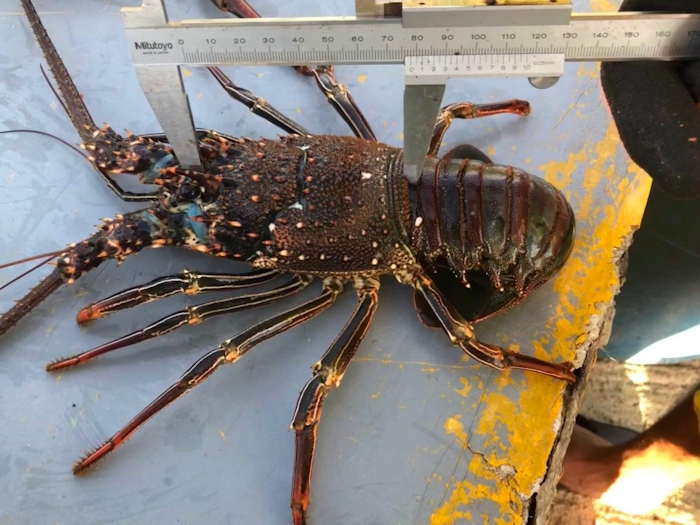
What are the legal consequences?
For the fishers
The Fisheries Regulations, 1987 (as amended) prohibits the catching and killing of lobster within Seychelles waters without a valid fishing license and carries a maximum penalty of R20,000. Furthermore, failure to abide by the license conditions may result in the license’s revocation.
For the general public
If an SFA receipt cannot be produced upon request, lobster individuals can be seized, and in most serious cases, they will be prosecuted with fines as much as Rs20,000.
Include a picture of:
- Enforcement staff on site with lobster
How can you help?
As individuals, you can also help protect the lobster stock by reporting sightings of suspicious poaching activity or suspicious social media posts. You should always buy from licensed fishers (as published by the authority) or official sale outlets and more reputable sources. You should always request a sale receipt when you purchase it.
Please help us protect this delicacy so we can continue to savour it for many years.

